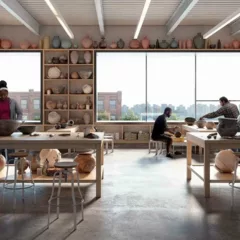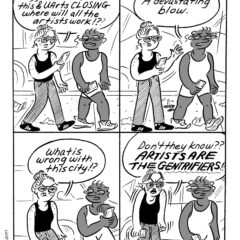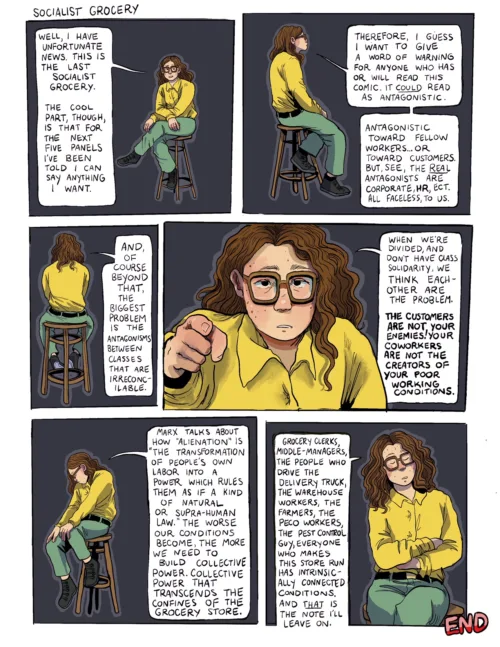92-year old Fishtown resident, Marie Ulmer, studied at Philadelphia Museum School of Industrial Design, the predecessor of University of the Arts, and was a long-time illustrator at the Free Library. Tell All, which can be seen through Oct. 14 at U Arts’ 817 Gallery (on the 8th floor of the Anderson Building, 222 S. Broad St.) is her first solo exhibition, and long overdue.
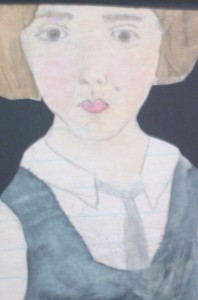
The small exhibition focusing on her early work was organized by U Arts alumnae Candace Karch and Janel Rivera Frey who have taken on the job of cataloging Ulmer’s work. It begins with a hand full of grade-school drawings including one particularly haunting pencil and watercolor self-portrait on lined writing paper (above). Three later self-portraits show a similarly serious young woman with sharp features and a notable gap between her front teeth.
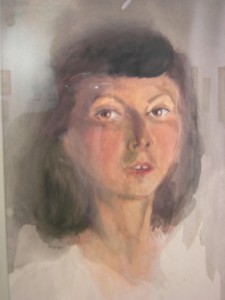
The bulk of the work was produced during her time at art school and just afterward and includes portraits, self-portraits, a number of illustrations and several prints. The later include two charming wood engravings, one an ex libris plate. The illustrations have the romantic style common to picture-books of the 1940s. Ulmer favors figures in movement and atmospheric landscapes, real or imagined. In one, untitled illustration two horses gallop through a star-flecked sky as a young woman plays guitar for a child who has just noticed a tiny being (a fairy?) in the foreground.
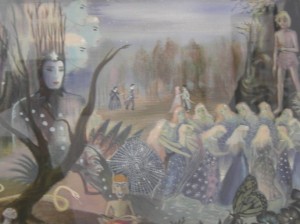
The most complex is an lp record cover for Mendelssohn’s Midsummer Night’s Dream. The foreground is filled with details of life on the forest floor: speckled mushrooms, a snake, caterpillars and butterflies. A group of tow-headed maidens dance in a circle in the middle ground, observed by several supernatural beings, and two couples in period dress inhabit the background.
Let’s hope these are just the first of the surprises to come from Ulmer’s studio.
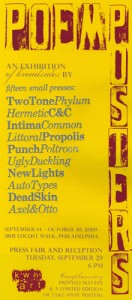
Broadsides are printed with text on one side only and were originally intended to be posted in public, rather like flyers or posters. In modern form they have become a genre favored by practitioners of letterpress (the sort of type used by Guttenberg, which is experiencing a revival of sorts) and are usually produced in limited editions. Some have illustrations accompanying the text and the form is particularly suited to poetry.
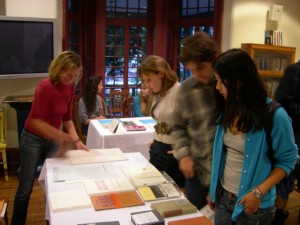
On Tuesday, Sept. 29 Kelly Writers House at the University of Pennsylvania held a fair of work from some of the fifteen presses from across the country represented in the exhibition Poem/Posters, which continues through Oct. 30, 2009. The presses used a variety of means and effects, including handmade paper created from a poet’s tee shirts, hand-written texts, and a variety of expressive layouts.
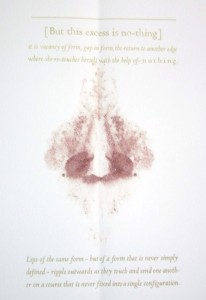
Two of the artists came with their wares: Megan O’Connell of Dead Skin Press, Portland, ME and Aaron Cohick of NewLights Press, Oakland, CA, and of all the presses theirs pushed the broadside format and printing technique to the fullest. O’Connell is a long-time friend and I’ve watched through the years as she mulls over texts which interest her and interprets them with typography, layout and the occasional image. Her broadside based on Luce Irigaray’s words about woman’s self-creation and search for form (above) is paired with an ink-blot created from spit and pigment which looks remarkably like the female reproductive organs. In the exhibition O’Connell is showing six from an eventual 33 double-page spreads of Agile Reactions: 33 Bean Games by Alison Knowles, which the two have collaborated on.
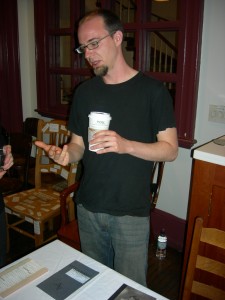
Aaron Cohick brought a variety of editioned and unique books to the fair and is exhibiting three broadsides based on a complex technique in which he uses letterpress to create a template then cuts the background paper away from the letter-forms which become inked through handling with inky fingers. Cohick thinks through type. Several of his books and broadsides deal with the tension between printing and erasure and his must be one of the rare presses which employs exacto knives as readily as type.
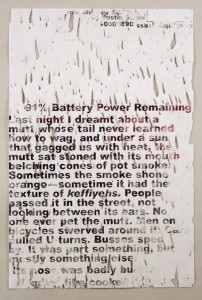
Kelly Writers House was giving away the limited edition, letterpress poster (above) created to announce the exhibition, and if you get there in time, may be offering them still.


